Physical Address
304 North Cardinal St.
Dorchester Center, MA 02124
Physical Address
304 North Cardinal St.
Dorchester Center, MA 02124
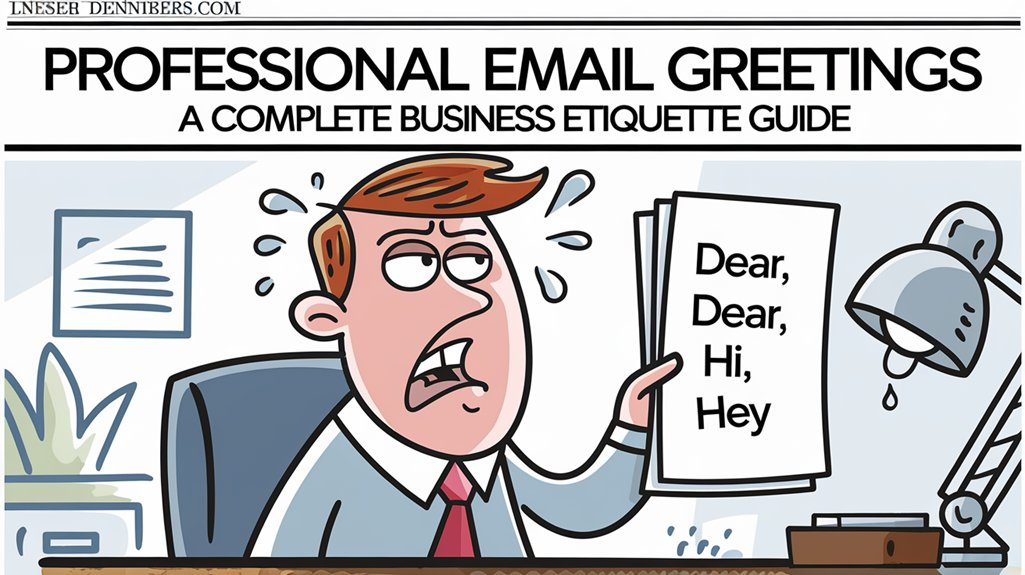
Boost your professional image instantly by mastering the art of email greetings that strike the perfect balance between formal and friendly.
Just as you’re crafting your next business email, you’ll find that the art of professional greetings has evolved considerably in today’s digital workplace. You’ve likely noticed how a single opening line can either strengthen or weaken your professional relationships, making the difference between a warm response and a cold shoulder. Whether you’re reaching out to a potential client, communicating with senior executives, or connecting with international colleagues, your email greeting serves as your digital handshake. As workplace cultures continue to blur the lines between formal and casual communication, you’ll need to master the nuanced approach that modern business etiquette demands.
A well-crafted email can make or break your professional relationships from the moment it lands in someone’s inbox.
Contextual awareness is essential when selecting appropriate greetings that match both your recipient and situation.
To maximize email effectiveness, focus on clear subject lines that grab attention and professional greetings that set the right tone.
Your first impressions matter considerably, so make certain you’re using a professional email address, structuring your content well, and closing with a proper signature containing your complete contact details.
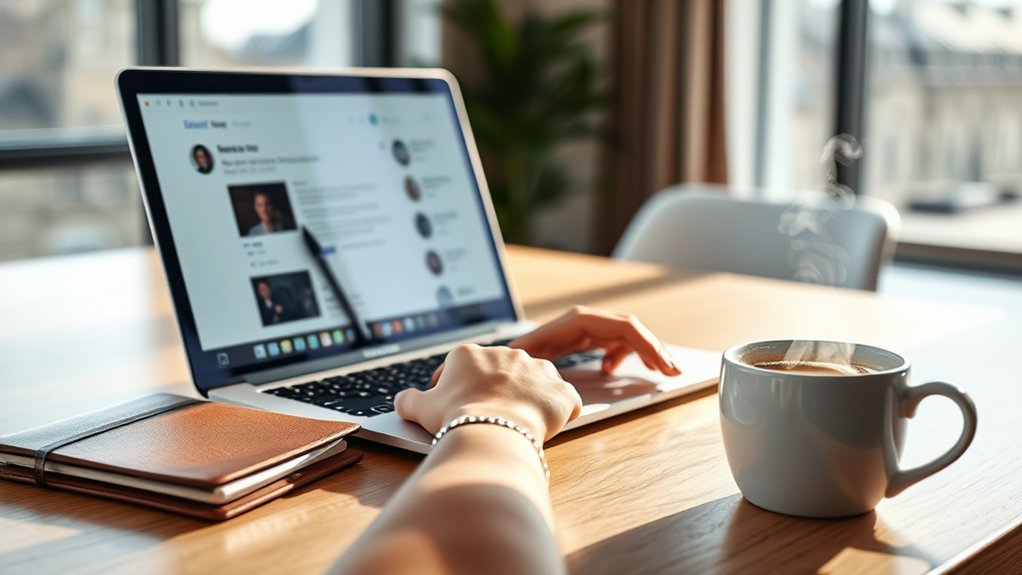
When crafting professional email greetings, you’ll need to carefully choose between formal salutations like “Dear Dr. Smith” and casual ones like “Hi Jane,” based on your relationship with the recipient.
Remember to proofread thoroughly before sending any email to ensure your greeting and entire message are free of errors.
You’ll also want to take into account cultural nuances, as greeting conventions can vary greatly across different regions and professional settings.
Whether you’re sending a morning update or an evening proposal, you can enhance your message’s effectiveness by using time-appropriate opening lines that acknowledge the recipient’s time zone and schedule.
The distinction between formal and casual email salutations plays a crucial role in establishing the right tone for your professional communications.
For formal greetings, opt for “Dear [Name]” or “To Whom It May Concern” in business correspondence. Cultural sensitivity should be considered when choosing greetings, as formality levels vary across different regions and backgrounds.
When writing to familiar colleagues, casual greetings like “Hi [Name]” or “Hello” create a more relaxed atmosphere while maintaining professionalism.
Understanding cultural nuances in email greetings remains paramount for successful international business communication.
When engaging with international colleagues, you’ll need to demonstrate cultural awareness by using appropriate titles and honorifics.
Research greeting nuances specific to your recipient’s region, maintain formality until instructed otherwise, and avoid emojis in business contexts.
Consider language proficiency and regional customs when crafting your salutations.
Selecting appropriate email greetings requires careful consideration of time zones and professional contexts.
When engaging in global communication, opt for time-neutral salutations like “Hello” or “Dear” to maintain professionalism across different regions.
While timely greetings like “Good morning” work well for local recipients, they can create disconnection in international correspondence.
Choose your opening lines based on your audience’s location and relationship.
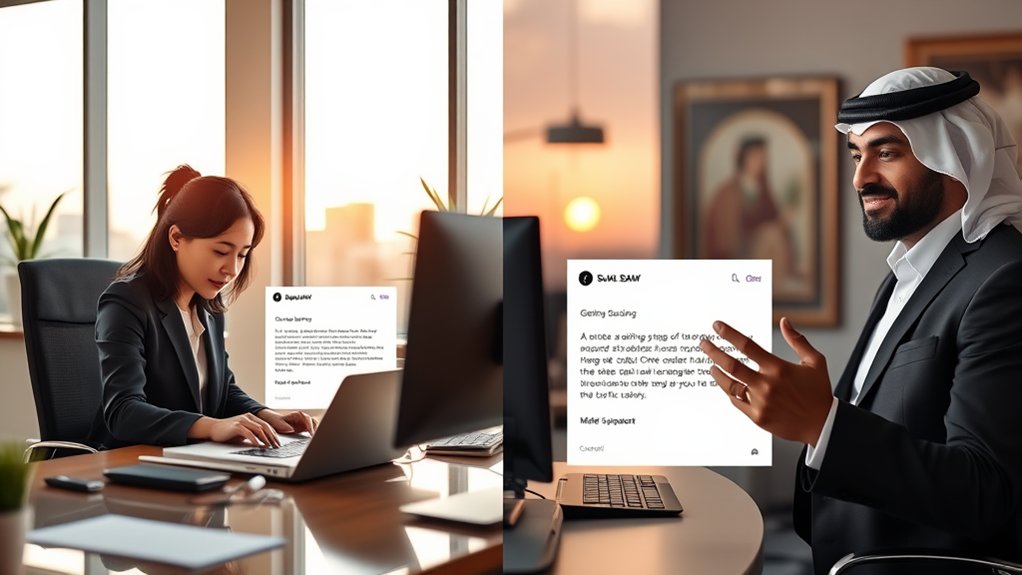
When communicating across borders through email, cultural awareness plays an essential role in establishing successful professional relationships.
To navigate global etiquette effectively, you’ll need to adapt your salutations based on cultural sensitivities.
Consider using formal titles in hierarchical societies, embrace indirect approaches with Asian recipients, and maintain formality with Germanic cultures.
Remember that appropriate greetings vary considerably across regions.
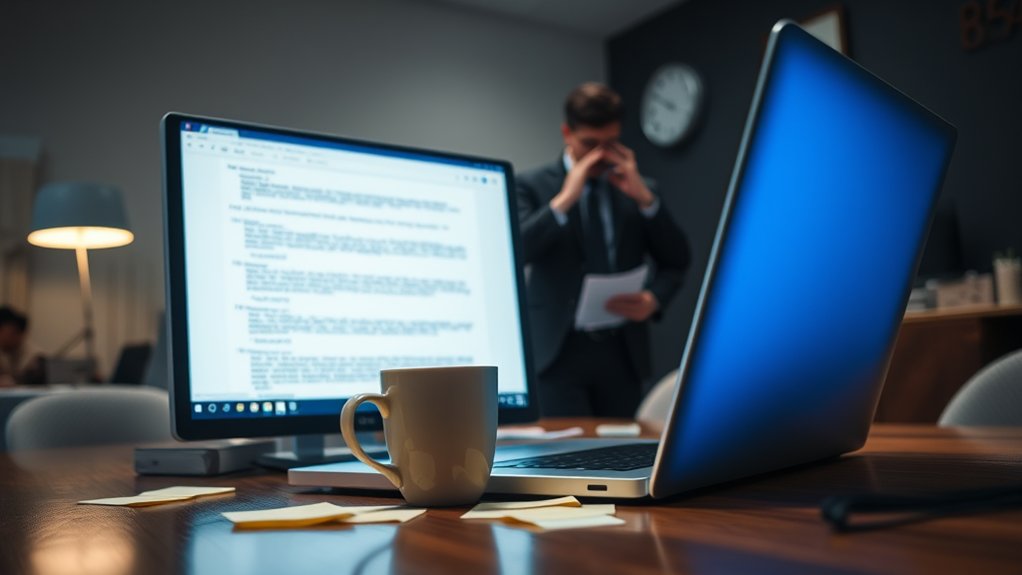
Despite their apparent simplicity, email salutations can be a minefield of potential mistakes that undermine professional communication.
Two critical areas where professionals often stumble are greeting personalization and salutation formality.
You’ll want to avoid generic openings like “To Whom It May Concern” and carefully match your level of formality to your recipient.
Watch for spelling errors in names, inappropriate use of titles, and overly casual language.
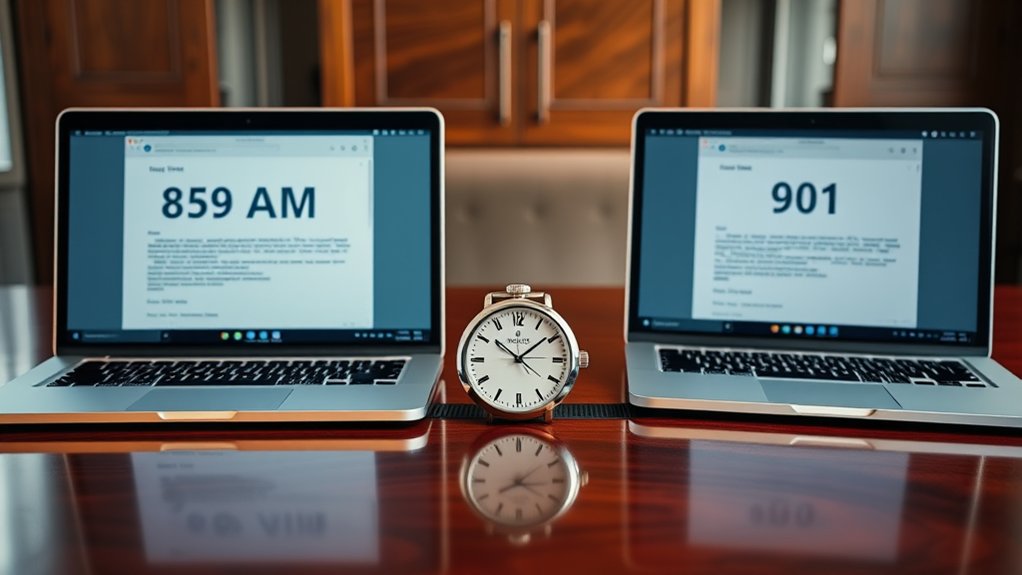
Managing time-sensitive emails requires a strategic approach that balances urgency with professionalism.
Your time management skills directly impact email urgency effectiveness. When handling critical communications, follow these essential protocols:
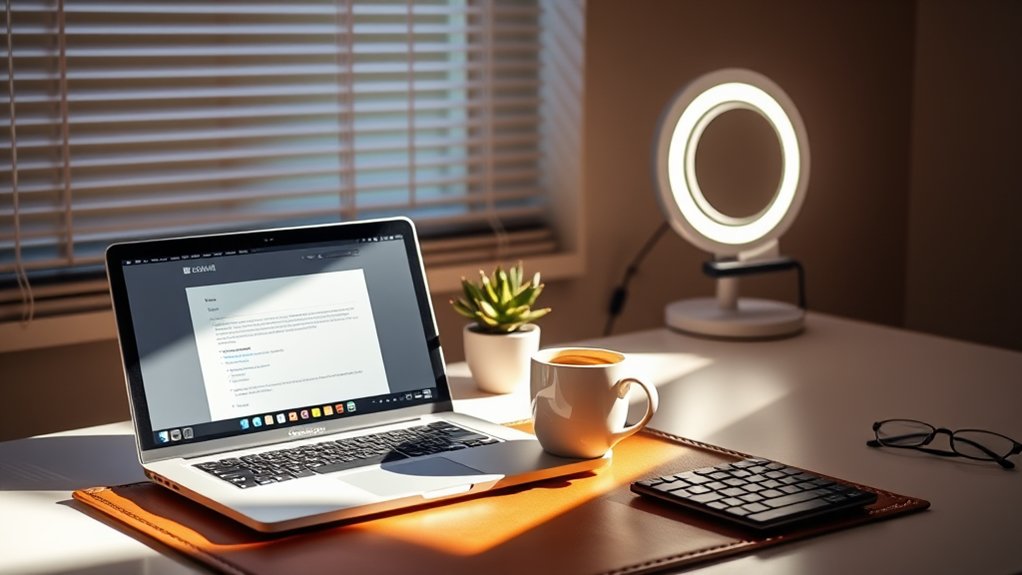
When managing remote teams, you’ll need to establish clear virtual meeting protocols that promote active participation and professional conduct across digital platforms.
You can strengthen your digital team culture by implementing consistent communication standards, including camera-on policies, scheduled check-ins, and structured agendas for all online meetings.
These foundational elements will help you create an engaged virtual workspace where team members feel connected and understand their roles in maintaining professional remote communication standards.
In today’s digital workplace, mastering virtual meeting etiquette has become essential for effective remote business communication.
When leveraging virtual tools, guarantee your success by assigning clear meeting roles and following these key practices:
Remote work environments have transformed traditional team dynamics, making the development of a strong digital culture paramount to business success.
Foster team bonding through unified digital platforms and regular virtual engagement opportunities. Encourage active participation in discussions, maintain transparent communication channels, and respect cultural differences.
Invest in dedicated culture-building initiatives while avoiding micromanagement to create an empowered, collaborative digital workspace.
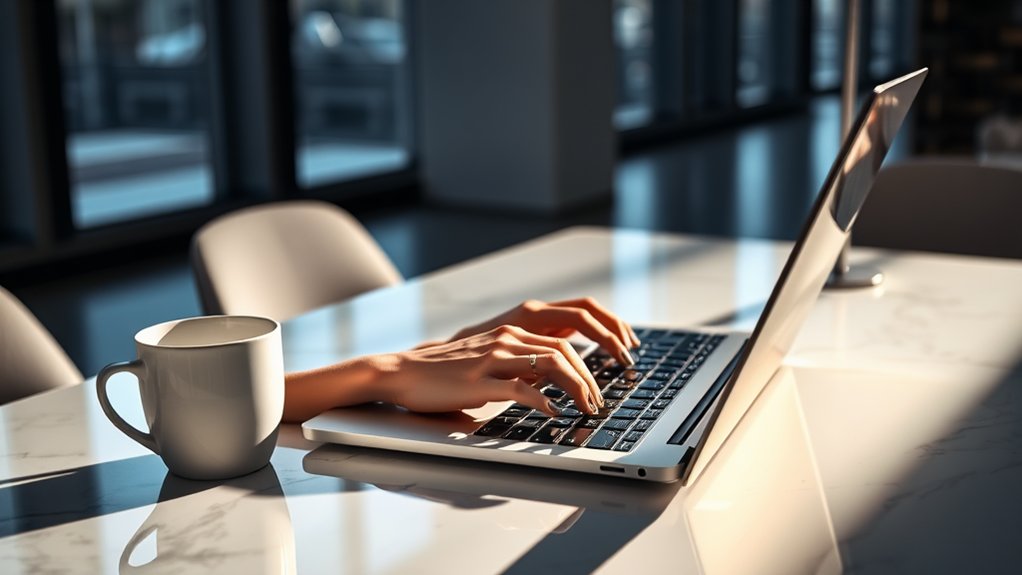
Professional email communication serves as a cornerstone for building and maintaining valuable business relationships in today’s digital landscape.
Through strategic email follow ups and relationship nurturing, you’ll forge meaningful connections by:
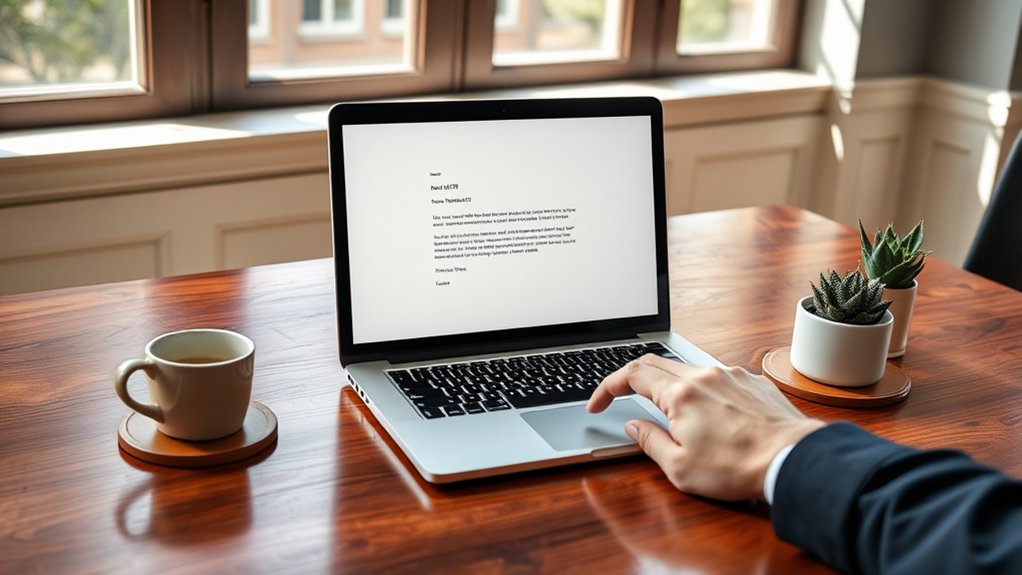
Selecting an appropriate email sign-off stands as a crucial element that can either strengthen or undermine your professional communication.
To maximize your email sign off effectiveness, choose variations that align with your message’s tone and recipient.
For formal business exchanges, opt for “Sincerely” or “Best regards.”
In casual professional settings, you’ll find “Best” or “Thanks” more suitable, while maintaining consistent professionalism.
You’ll find that mastering professional email greetings directly impacts your career success. Studies indicate that well-crafted email openings increase response rates by 30% and accelerate business relationship development. Whether you’re connecting with international colleagues or local team members, implementing these proven greeting protocols demonstrates your business acumen. By following cultural considerations and adapting your approach thoughtfully, you’ll establish meaningful professional connections that drive results.